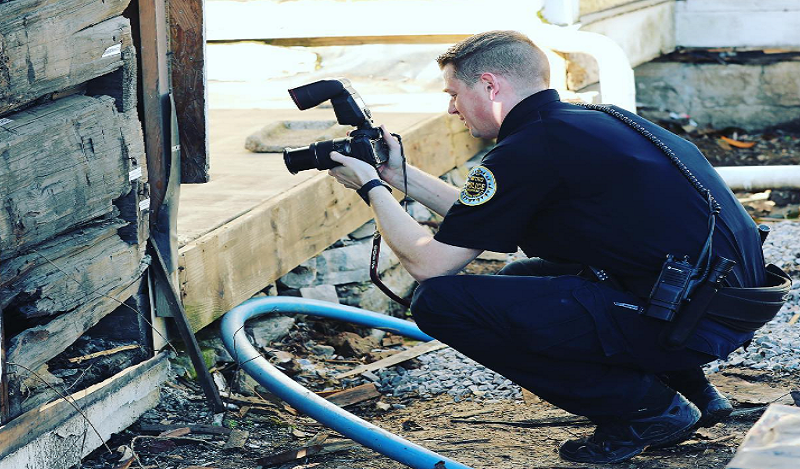
Law enforcement agencies investigating crimes endemically process scenes by first photographing the place of occurrence in its entirety then meticulously culling for physical evidence which, when/if it ever goes to trial, is presented and explained by the keen-eyed police personnel inclined in forensic sciences.
In America, crime scene processors are either sworn police officials or trained civilian support staff —both badged police employees— doing the documentation of incidents and the aggregated puzzle pieces left behind, especially those not necessarily obvious to the naked eye.
Growing up in the New York City hustle and bustle, I always saw fully-armed and uniformed NYPD cops donning police-blue windbreakers with big block letters spelling “Crime Scene” in white font. Deploying sworn or non-sworn police personnel to crime scenes for documentation and evidence collection varies across jurisdictions. Agencies too small (underbudgeted and understaffed) typically rely on Mutual Aid Agreements, with neighboring departments being called upon to provide their cadre of CSIs.
Once I endeavored beyond NY borders and landed in Florida, I found that smaller agencies (which comprise most of America’s law enforcement entities) hire non-sworn civilian personnel to carry out the crime-scene mission of recording the event’s aftermath and collecting the clues that may lead to a suspect. Their findings are documented and incorporated into the overall police report(s) chronicling the investigation.
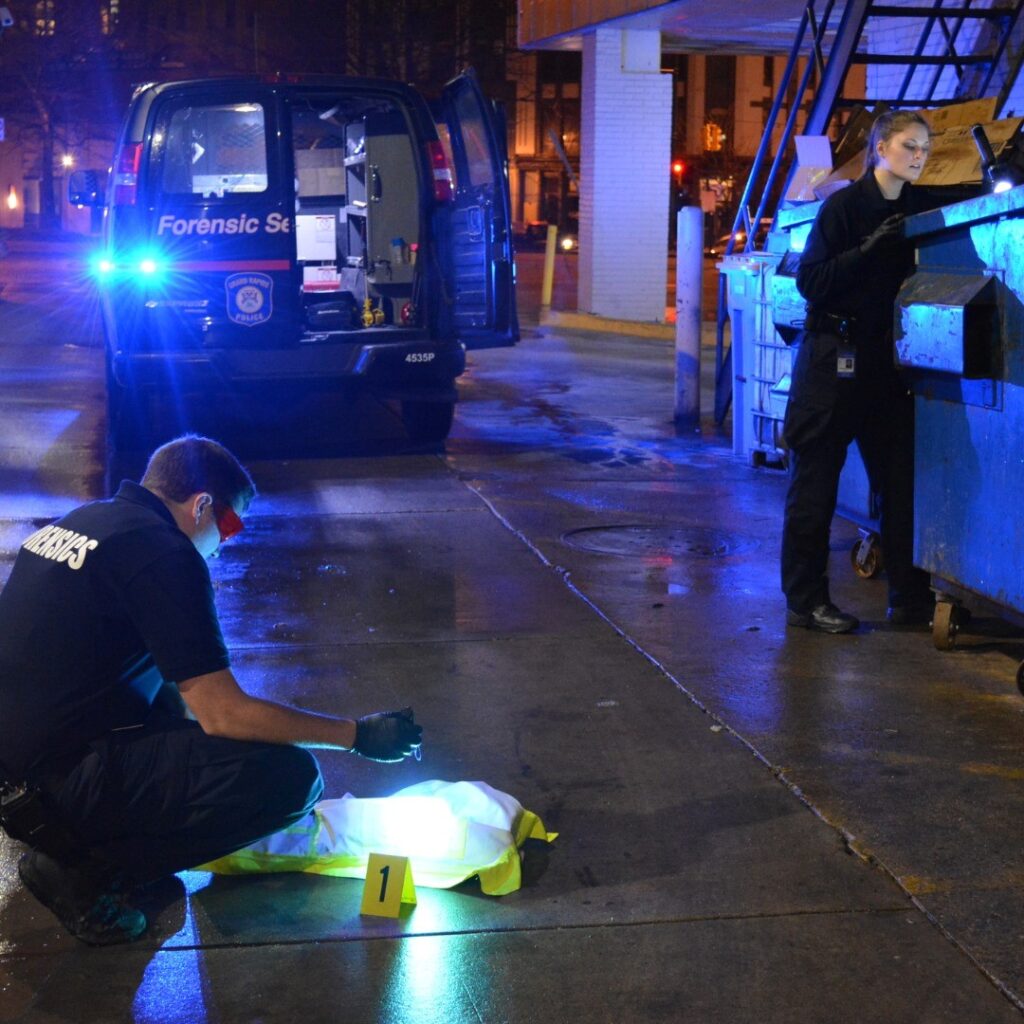
(Photo courtesy of the Grand Rapids Police Department.)
Although my department (and academies) trained most of their police employees in the imperative nature of crime-scene mapping and evidence collection, along with the latter’s custodial responsibilities stipulated by statutes, we found that deploying civilians to conduct such a mission had optimal results. Namely, crime scene technicians (CSTs) weren’t considered primary first responders (such as sworn cops) and were afforded more time to process crime scenes since not every incident entailed much processing.
The phrase “Can you break for another call?” was rarely asked of CSTs by public safety dispatchers, leaving them to scrutinize nooks and crannies and sift out barely noticeable things that are often substantive catalysts helping to solve the caper.
With the recent active shooter blasting their way in and murdering several children and adults at the Covenant school in Tennessee, the crime scene is considered massive. Even though the Metro Nashville Police Department has its own Crime Scene Investigation Section consisting of both sworn and non-sworn staff collaborating on processing criminal events and collecting evidentiary materials.
A blurb from the pages of the Metro Nashville PD concisely explains the gist and makeup of a metropolitan crime scene unit:
“The Crime Scene Investigation Section, formerly the Technical Investigations Section (TIS), is part of the Forensic Services Division under the Administrative Services Bureau. This section is staffed 24 hours a day by 3 different shifts. Every CSI investigator is trained in the documentation, collection, and preservation of all manner of physical evidence. This can be (but is not limited to) a fingerprint, footprints, tool impressions, blood or semen, trace evidence (hair or fiber), or even tire impressions. These small, seemingly insignificant, pieces of evidence can be paramount to identifying a suspect and bringing them to justice.
“Many of the CSI investigators have attended specialized training schools from the FBI, TBI [Tennessee Bureau of Investigation], ATF, DEA, and many universities throughout the southeastern United States. Additional specialized training has been studied in the disciplines of: chemically enhanced latent prints, specialized photography, blood-stain pattern analysis, fingerprint comparison, digital photography, tire and footprint evidence, flight path analysis, practical homicide and death investigation, modern fingerprint development techniques, and many more.
“The CSI section is equipped with a complete mobile lab and support vehicles to respond to scenes. Evidence that cannot be processed in the field is brought to the Crime Scene Investigation Section’s latent evidence processing lab. The lab contains a wider variety of chemical processes that can be administered, and there are several bays in which vehicles can be secured and processed at a later time. Because of the fragile nature of physical evidence, some vehicles are brought here, out of the weather, and maintained in a controlled environment while awaiting processing.”
As is the protocol with the Florida Department of Law Enforcement (FDLE) and other state police entities, the Tennessee Bureau of Investigation assisted the Nashville police with processing a vast crime scene created by a shooter in a school.
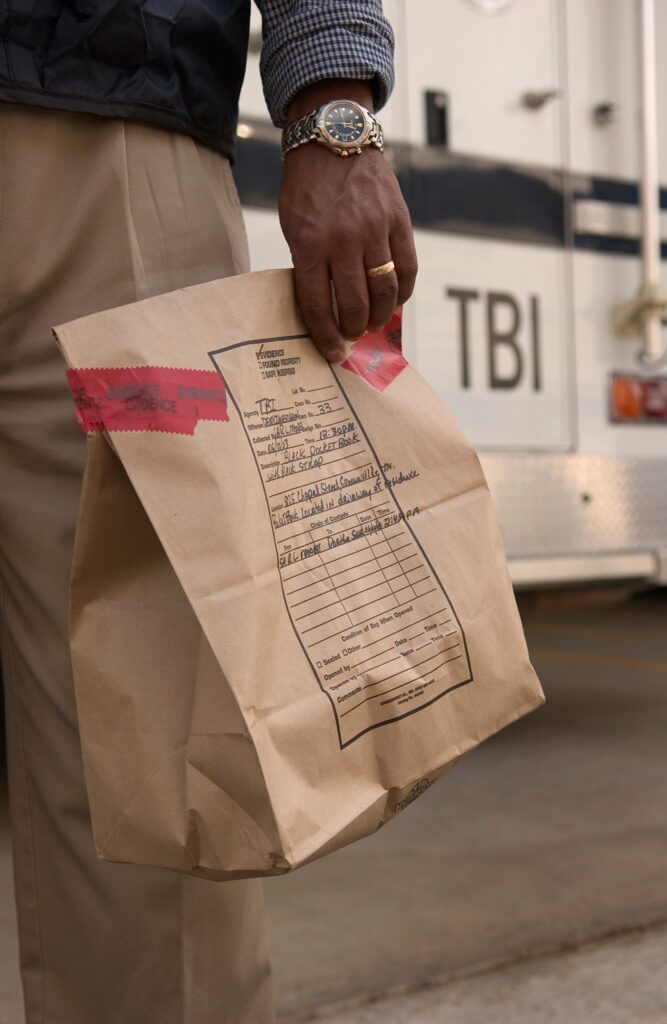
(Photo courtesy of the Tennessee Bureau of Investigation.)
While crime-scene processing is conducted by law enforcement professionals, grief-stricken families find themselves flooded with memories of those they lost to violence, mindful of the funeral service arrangements and the malaise in mourning.
Given the certainty of any police personnel anywhere witnessing the worst scenes caused by human hands, it should come as no surprise that CSTs performing their assigned duties at Covenant have, by consequence of avowed duty, mentally filed the carnage, burdened by the stark reality of what occurred. This talks about the imperative nature of acute analytics and ultra concentration of principles forming archives attesting to barbarism and materials thereof.
In the aftermath, PTSD potential is present and a gross contention for CSTs. The scene searchers and documenters of monstrous malice are surely afflicted. Yet, they respond to the next criminal event and many thereafter…
Anonymously, I watched a CST’s persona gradually devolve since his hire by a police department. As the major crime scenes stacked, his obsession with sleuthing to perfection, unfortunately, availed his mind, heart, and soul to the devil’s prints and claw marks.
Indeed, “responding to trauma creates trauma.”
Little-known, largely obscure private companies come in after the CST’s crime scene is deemed fully processed and recorded, turning over the gory remnants of malice to hazmat-suited professionals trained in traumatic crime-scene cleanup.
Here is a self-description from one biohazard and crime-scene cleanup company operating nationally:
“In the event that your property needs hazmat, trauma, or crime-scene cleanup, [we] can help you. This type of situation requires competence, experience, and respect for all involved. Our skilled professionals will always treat your property and the people involved with the greatest empathy and respect in the face of trying circumstances. Once the police have completed their investigation of a crime scene, cleanup and restoration can begin.
“Because traumatic events often involve biological and chemical contaminants, it’s very important to know that the restoration process is being handled in compliance with all government, environmental, and health regulations.”
In that context, CSTs are the ones who render professional declarations that a crime scene is thoroughly processed by law enforcement authorities, remove the yellow/black “Crime Scene” tape, and relinquish custody of the premises.
With all that, thank goodness it’s not always about gore…
When you examine our feature photo above, you might think to yourself, Boy, that is some old-looking wooden beams he’s photographing, you are right. That brings us to the academia involved in forensic science, criminology, and criminalistics, studies of which have been popularized by several TV docuseries casting light upon crime-scene sciences and placing forensics under the microscope.
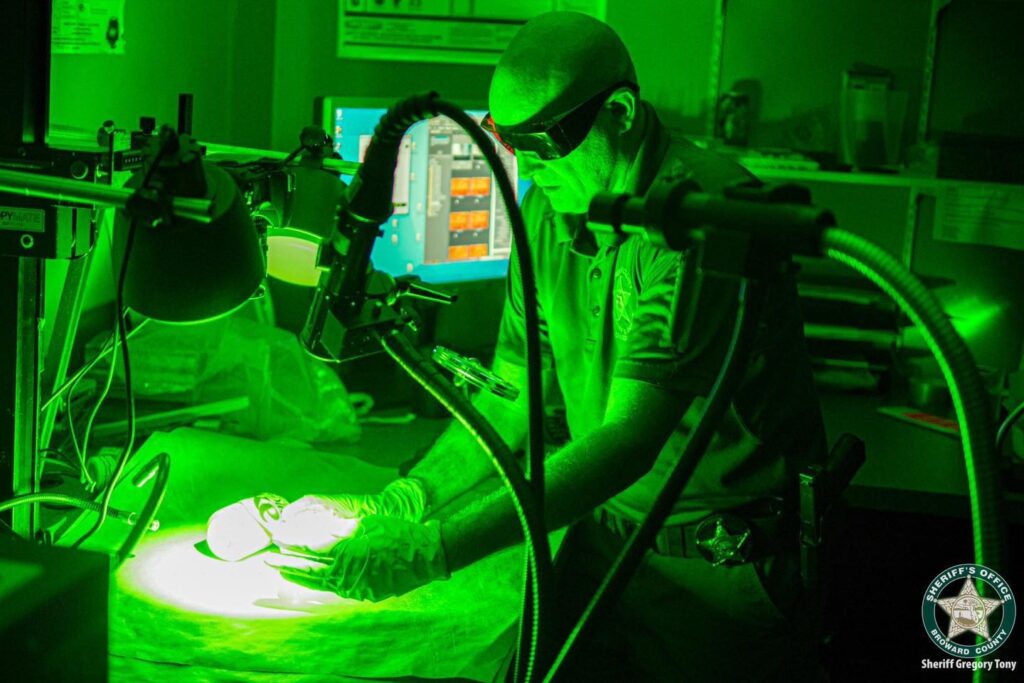
(Photo courtesy of the Broward County Sheriff’s Office.)
One such docuseries interviewed various CSTs investigating complex capers, ultimately homing in on molecular-sized evidence or dog hair or paint chips or whatever needed obsessive scrutiny and archival searches/study—the usual.
Not only are law enforcement professionals trained in the minutiae of photographing and evidence-gathering scenes where crimes transpired but also assist civic groups in analyzing obscure matters such as historical sights and artifacts therein.
From our brothers and sisters with the Metro Nashville Police Department (MNPD), we witness a cadre of skilled CSTs documenting antiquity and remnants for the annals:
“Recently, our partners with Metro Historic Nashville invited us to help with an ongoing preservation project at a Sevier Park mansion, which dates back to the 1850s! During building renovation, gunfire damage from the Civil War’s 1864 Battle of Nashville at Sunnyside was discovered and members of our Crime Scene Investigation Section were able to help document and analyze the damage for further research. Using state-of-the-art FARO and drone technology, the team was able to help recover artifacts, bullet defects, and details completely lost to time, which will be preserved for the future.”
The Nashville PD collab with local historical society aficionados is a mutually beneficial partnership, whereby city police CSTs practice skills and learn something new while harvested artifacts (Civil War remnants) are documented (photographed before and after unearthing), handled with anthropological care, and stored for museum-grade display and/or university chronicles.
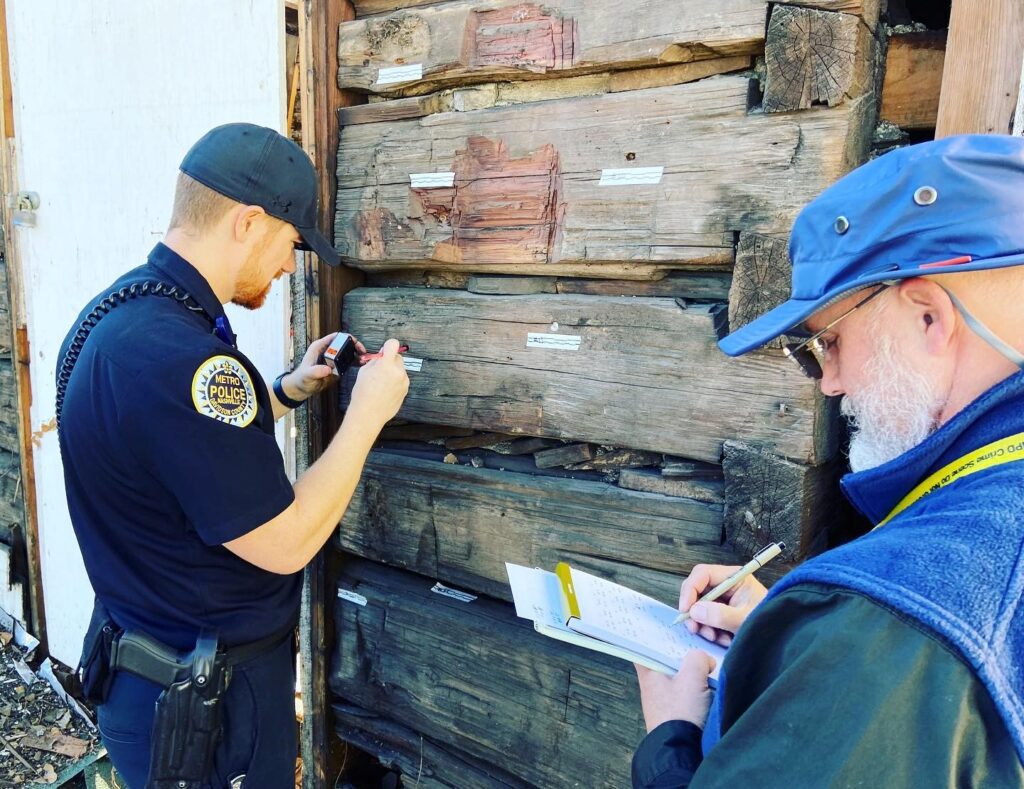
(Photo courtesy of the Metro Nashville Police Department.)
Plucking Civil War-era bullets from old wood ties comprising cabins whose exterior took quite a few bullet strikes may make a curious reader smile upon learning how the find was collected and by whom: forensic science-oriented police personnel.
The red pencil-thin rods LEOs employ in scenes involving bullet strikes help determine the trajectory of the bullets which, in turn, set the stage all over again, positing where the shooter(s) were standing or laying down or whatever the case may be.
As often is the case with any situation in life, involving skilled persons performing duties behind the scenes, after the hyper-activity simmers, the devil is in the details and CSTs are on the trail(s).